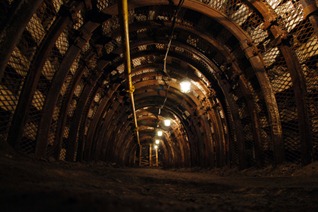Saving a Mountain for $3.25 a Month
 Would you pay $3.25 more a month for your electricity, if you knew that by doing that you would prevent any more mountains from being removed to mine their coal? The people who are fighting to keep coal companies from removing Blair Mountain in West Virginia would sure like to hear that you would.
Would you pay $3.25 more a month for your electricity, if you knew that by doing that you would prevent any more mountains from being removed to mine their coal? The people who are fighting to keep coal companies from removing Blair Mountain in West Virginia would sure like to hear that you would.
The battle for Blair Mountain in West Virginia is on again, some of the same people on the same sides. Of course it’s not exactly the same. In 1920, some fifteen thousand miners who were little more than disposable serfs to the coal companies fought three thousand heavily armed coal company goons and local and state police to a draw on the mountain’s flanks. President Harding called in troops to quell the rebellion, and the outgunned miners withdrew. As a “rebellion” is, by some definitions, a revolution that failed, it was a defeat for the miners. Nevertheless, as a result, Blair Mo untain took on the status of a national monument, a status that West Virginia – a state very much in the thrall of the coal industry — has contested.
untain took on the status of a national monument, a status that West Virginia – a state very much in the thrall of the coal industry — has contested.
Today several coal companies who own the land around the mountain are jockeying to remove it – literally – from the map, to get the coal under it. It’s not that there are not many mountains with coal under them, but this one seems to be especially on their agenda. It is, of course, in the middle of other mountains that have been ‘removed,’ but one suspects that the coal companies would just as soon delete this symbol of a time when they were challenged in the region, instead of rampant, as they are now.
The ostensible justification for removing Blair Mountain – as it is for removing any mountain – is that the work will bring jobs. Insofar as the jobs that the project will bring are the only jobs that local miner are likely to get, this is true. But there is an alternative that will save the mountain and bring even more jobs, and that is mining the mountain by underground means, the way all coal mining used to be done.
About forty per cent of all the coal mined in the U.S. is still mined underground. It is no longer mined by men working with picks and shovels, of course, the way they did it in the old movies about noble miners and their noble women and the evil, uncaring coal companies. The work is done by powerful machines that scrape the coal out of its seams, load it onto conveyors and send it out of the mountain on rails for the profit of environmentally uncaring coal companies. The trouble – for the coal companies – is that underground mining costs more. It costs more in part because they have to leave a lot of the structure of the mountain to hold up the part of the mountain that is over the mined coal – and that invariably means leaving a lot of coal as part of that structure.
 But back to jobs. Despite all the modern machinery, underground mining takes some one-third more miners than mountaintop removal mining. For the coal mining companies, that’s an additional expense. But for the miners, that means additional jobs. So removing Blair Mountain would create jobs, but not as many jobs as keeping Blair Mountain intact and mining the coal it contains by underground means.
But back to jobs. Despite all the modern machinery, underground mining takes some one-third more miners than mountaintop removal mining. For the coal mining companies, that’s an additional expense. But for the miners, that means additional jobs. So removing Blair Mountain would create jobs, but not as many jobs as keeping Blair Mountain intact and mining the coal it contains by underground means.
The coal companies say that the extra expense makes the cost of underground mining prohibitive: it prohibits power companies and other customers from buying coal mined underground when they can buy surface-mined coal for less. They claim that the additional expense will raise the cost of everyone’s electricity. Again, that is true, but it is a matter of degree.
Using figures provided by the U.S. Energy Information Administration (EIA), we get a national average for the cost of a ton of coal in 2010 to be $33.25, about 40 per cent of which is mined underground, and 60 per cent is surface-mined – including mountaintop removal. But, since the overall cost (nationally) per ton mined underground is roughly 50 per cent higher than the cost of surface-mined coal, the cost of that same ton — if the surface-mined 60 per cent had also been mined underground — would rise to over $41 – a difference of some $8 per ton.
The average American family uses 877 kwhrs of electricity per month, or 10,500 per year. Again according to the EIA, that costs the family an average of $1,037/year. It takes some 5 tons of coal to generate that many kilowatt hours, so at $33.25/ton, $166 of that is the cost of coal. If, however, all the coal to generate those 10,500 kwhrs came from underground mines, the coal would cost $205 dollars for the year, adding $39 to the annual bill. But the cost per month would be, on average, only $3.25. That’s where that figure came from.


